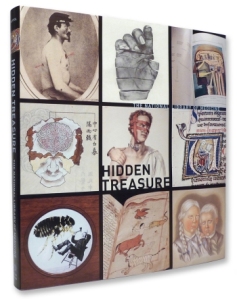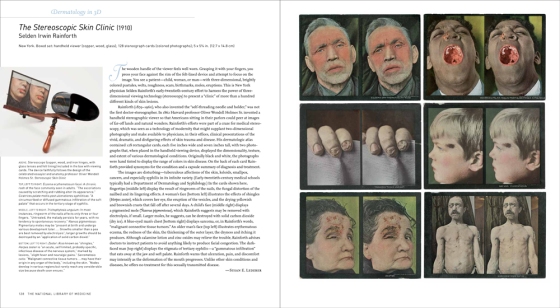Ever wonder if a hefty 90-pound tumor could be removed through the practice of mesmerism? The answer awaits in Bethesda, Maryland. That’s where you’ll find the National Library of Medicine, the world’s largest medical library, which houses more than 17 million items dating from the 11th century to the present offering information on countless medical conditions and methods.
Rare medical books, 19th-century surgical illustrations, mid-20th century animated cartoons, microfilms, photographs, journals, technical reports and much more can all be found within its walls.
Of course, if a trip to Bethesda and millions of items to peruse doesn’t fit into your schedule, a new book, Hidden Treasure: The National Library of Medicine (Blast Books), will bring many of the most fascinating artifacts to you, each accompanied by an essay from distinguished scholars, artists, collectors, journalists and physicians. The book celebrates the library’s 175th anniversary.
Among the many treasures lying between the covers is a wealth of wondrous materials largely unseen by the public and obscure to the librarians, curators and historians. Some, such as the hauntingly delicate paintings and illustrations of “monstra” collected in the early decades of the 19th century “from the museum of Dr. Klinkenberg” in the Netherlands had never before been reproduced.
Flip to page 142 and you’ll find a sketch of the enormous aforementioned tumor claimed to have been removed through mesmerism. Mesmerism, also known as “animal magnetism,” allegedly allowed its practitioners to fall into a trance and commune with distant minds. According to essayist Marianne Noble, “They saw through solid objects and even bodily tissues to identify illnesses.”
The tumor image is part of the Mesmerism Scrapbooks collection dating from 1842-54. The sketch, by Dr. James Esdaile, indicates a specially designed knife took three minutes to complete the procedure and that the patient “had no difficulty in recovering from the shock, and is doing perfectly well.”
If horrific skin diseases pique your interest, the Stereoscopic Skin Clinic from 1910 offers a large collection of disturbing images, including fingers suffering from ringworm of the nail, shingles covering a woman’s eye, and syphilis. All in glorious 3D with the aid of a stereoscope viewer.
An anonymous collector’s scrapbook of Chang and Eng Bunker, the original Siamese Twins, features articles, handbills, satirical prints, tickets to appearances, and various ephemera about the brothers during their 10 years of touring. As sideshow historian James Taylor notes, their run was “One of the most notable show-business acts of the nineteenth century.”
Treatments for gout, scurvy, and other ailments compiled by Elizabeth Strachey from 1693 to the 1730s offers various remedies, sometimes accompanied by a touch of magic—one of the pages features an acrostic of abracadabra on a corner. Of course, if you’re just looking to kill rats, Strachey recommends a blend of oatmeal, bacon fat, and lime.
Each of the 200-plus pages within Hidden Treasure offers a captivating and beautifully disturbing journey through the library. And relief that today’s medical advancements are indeed advanced.
© Marc Hartzman


